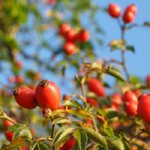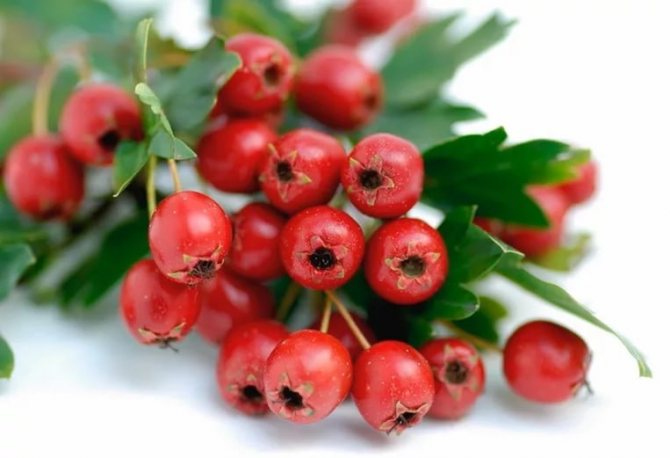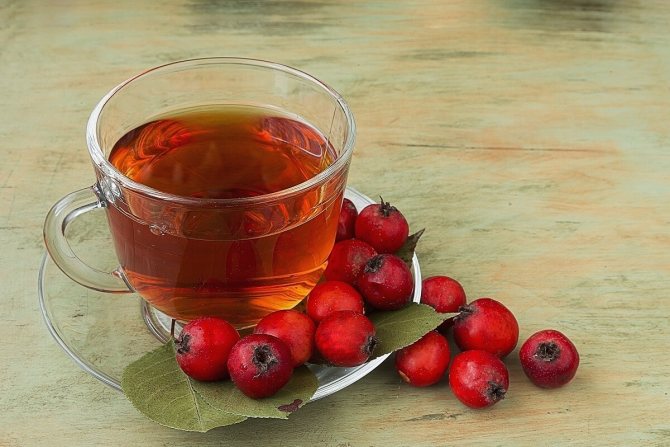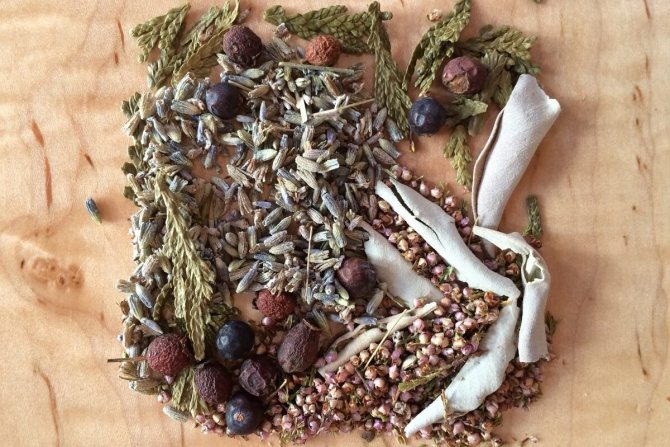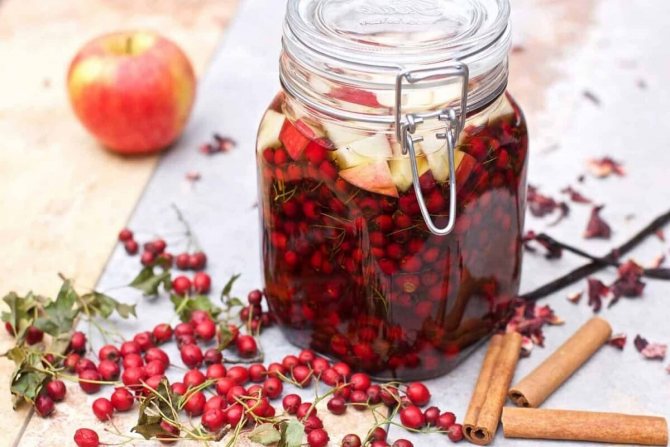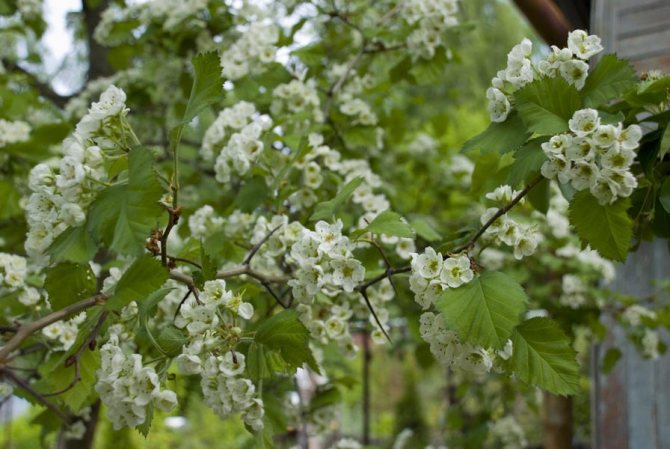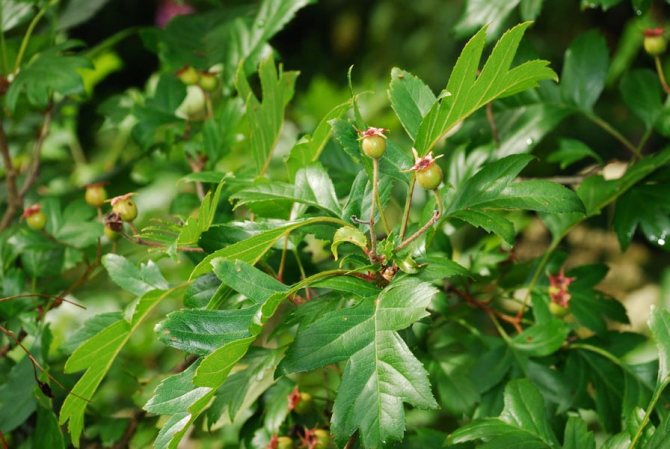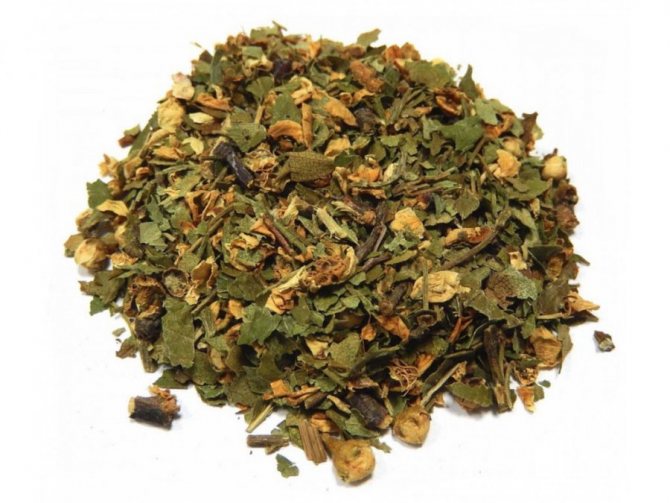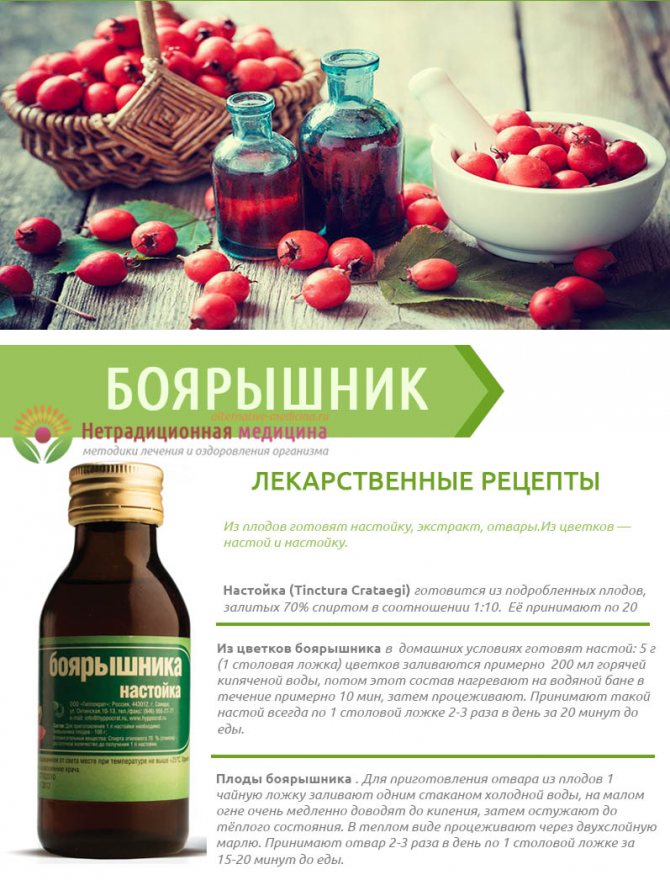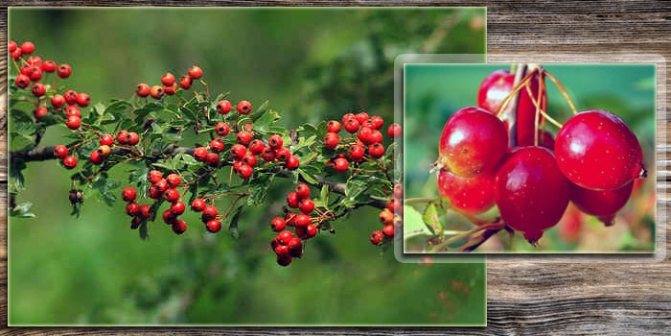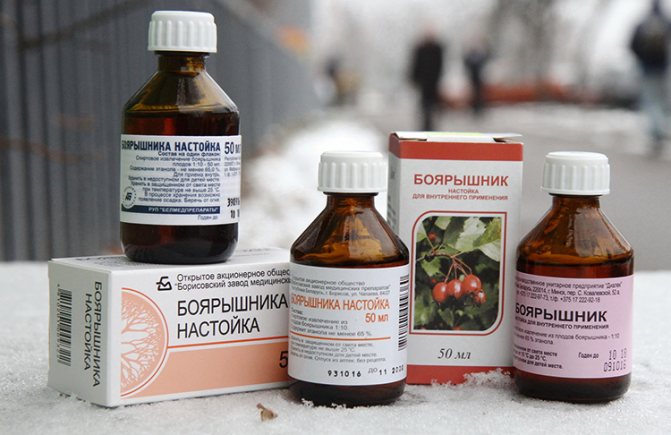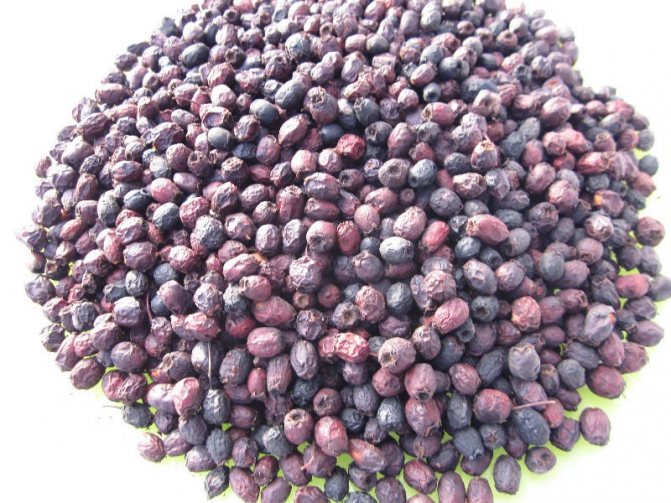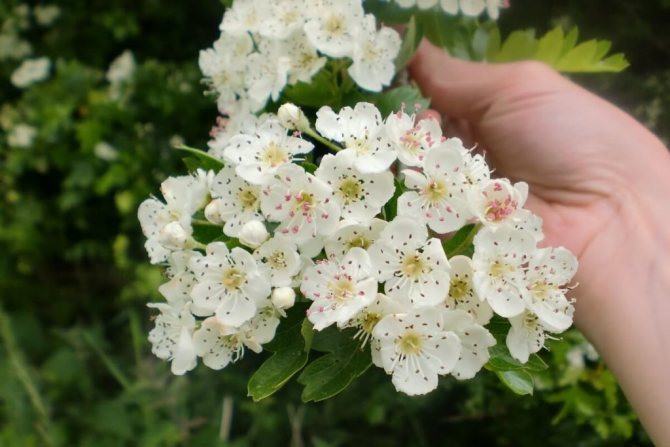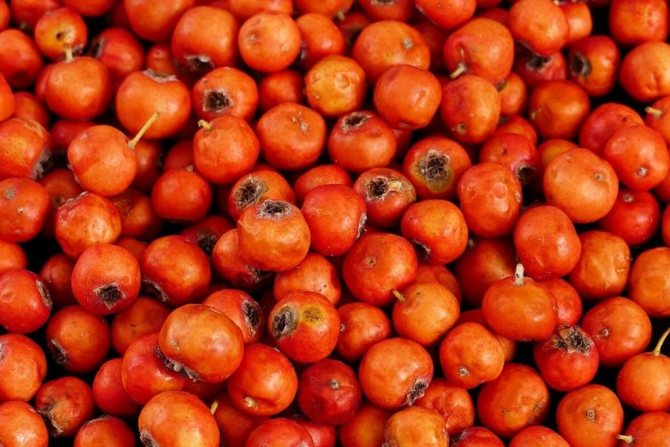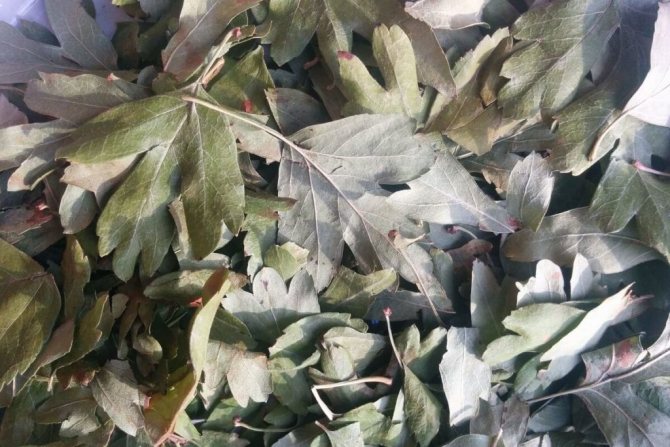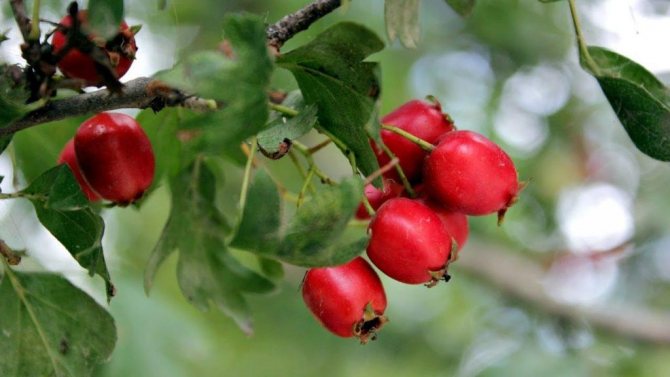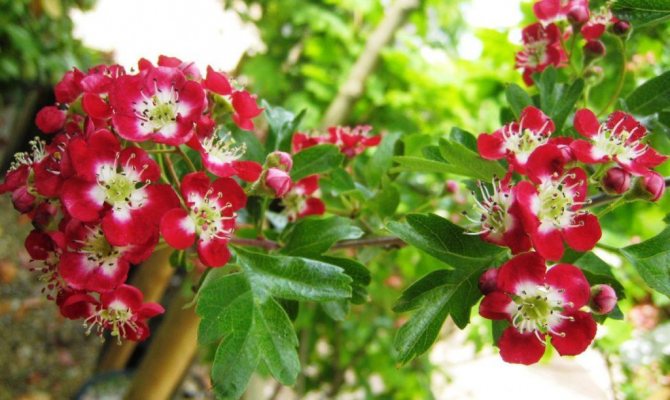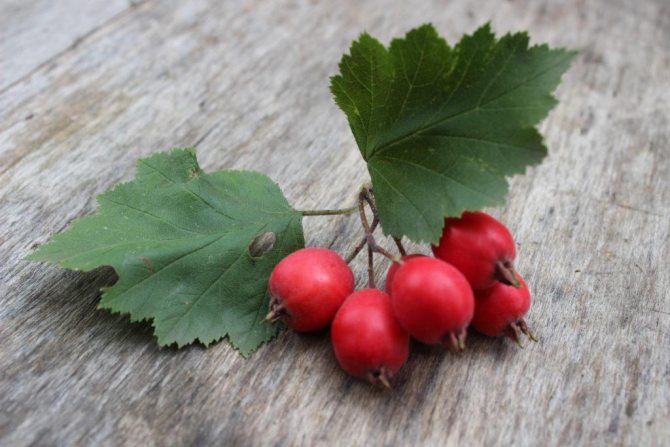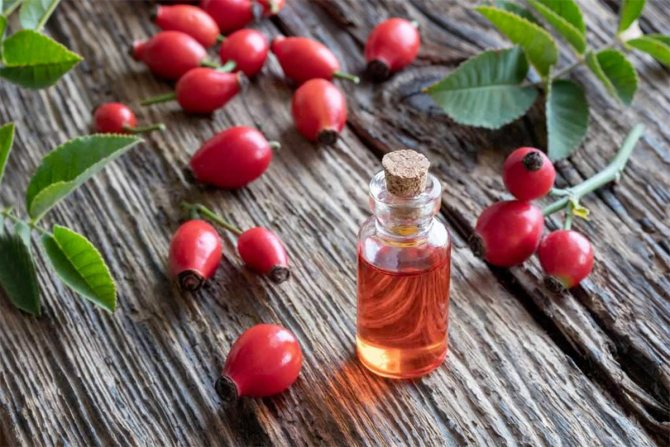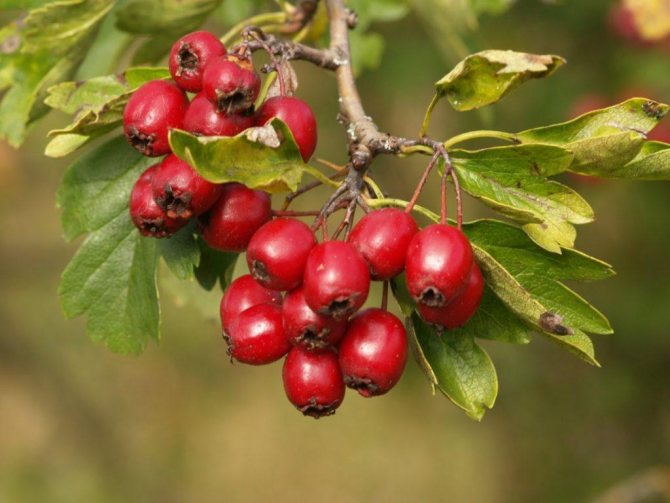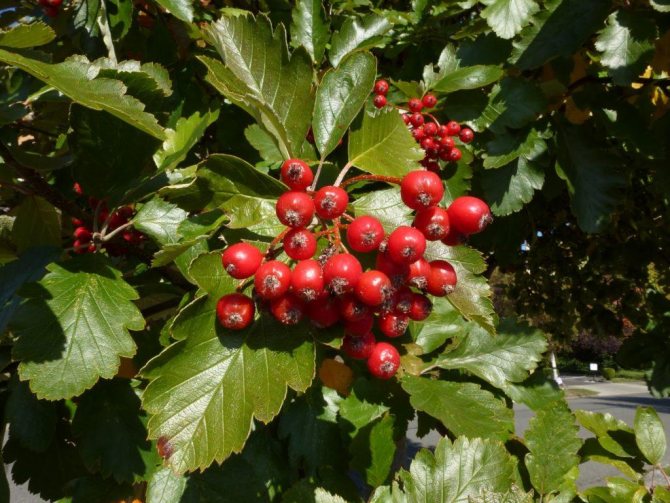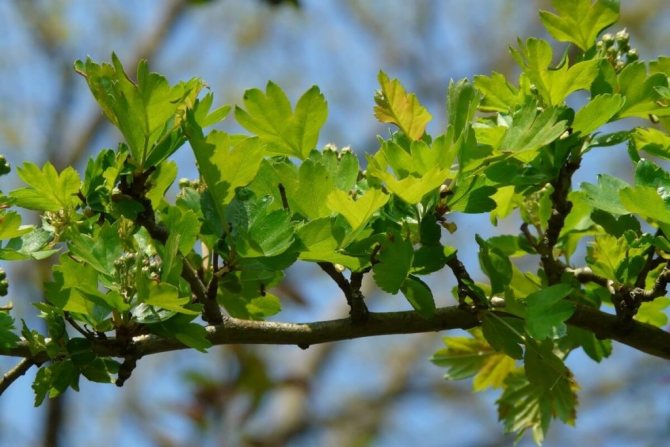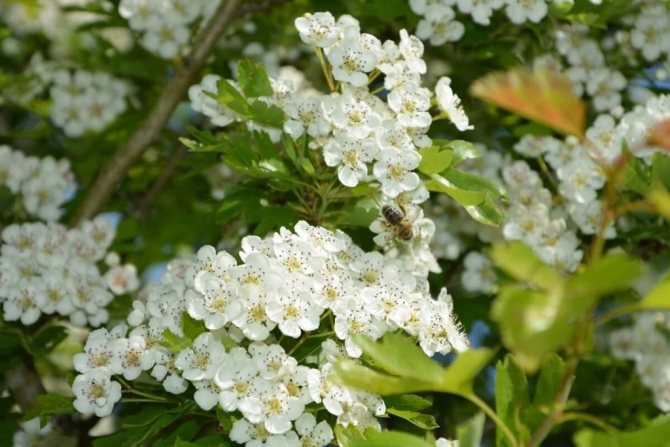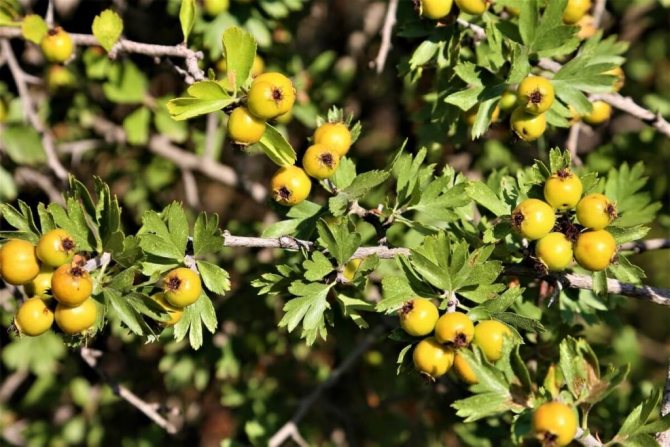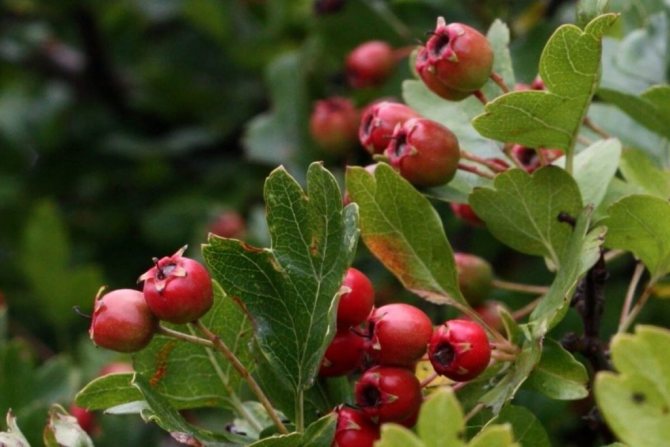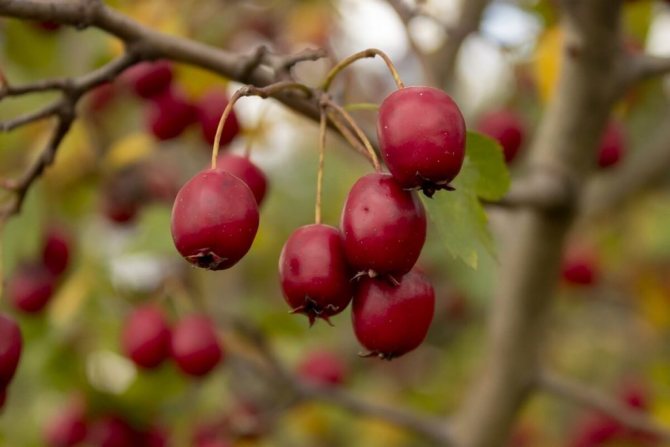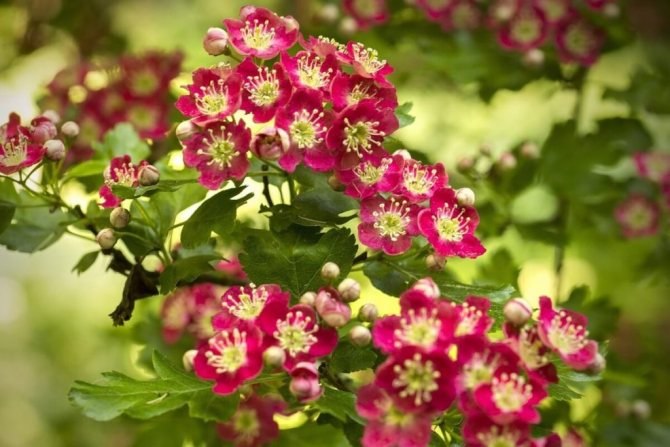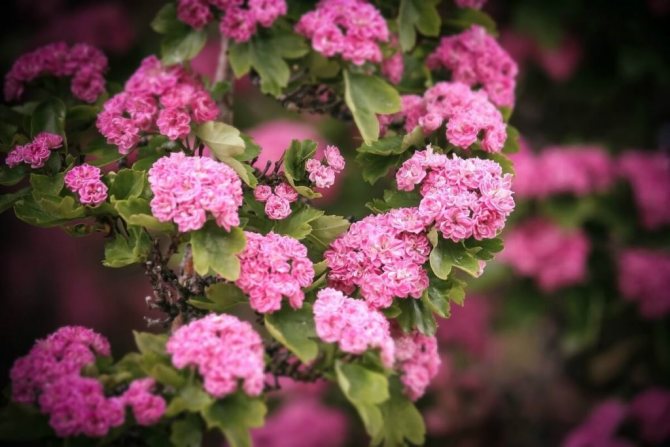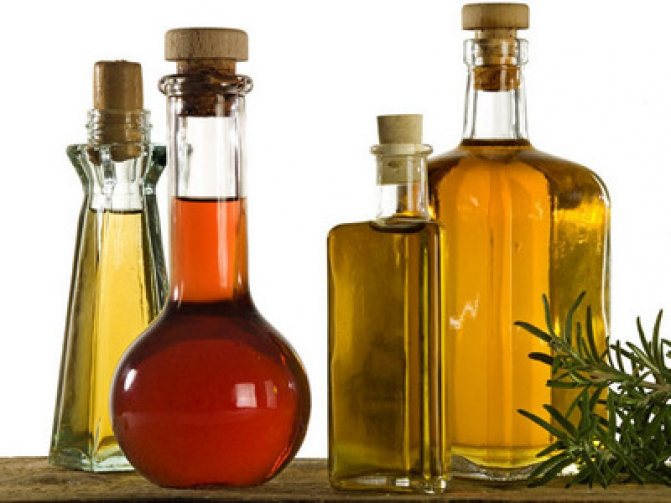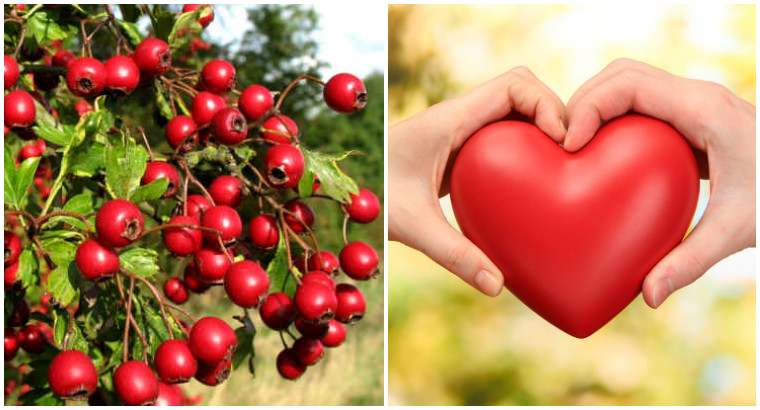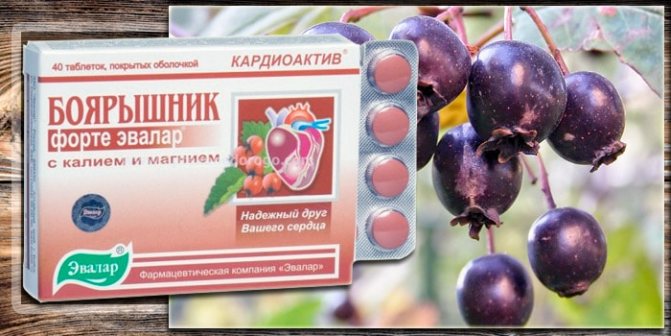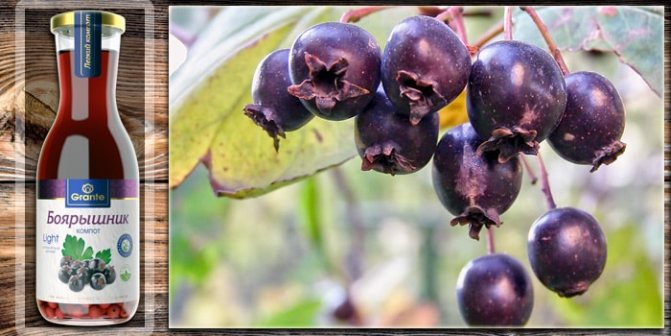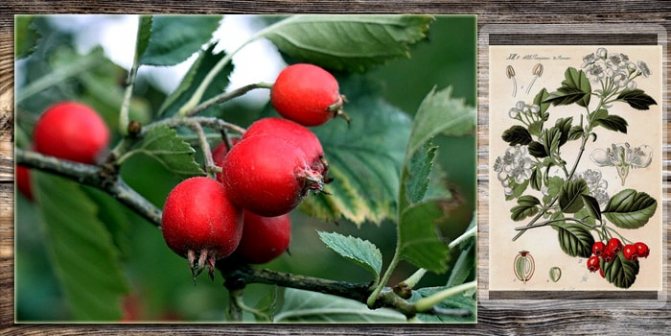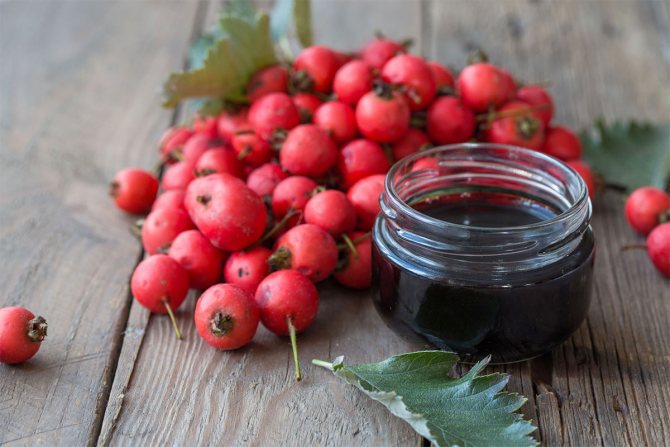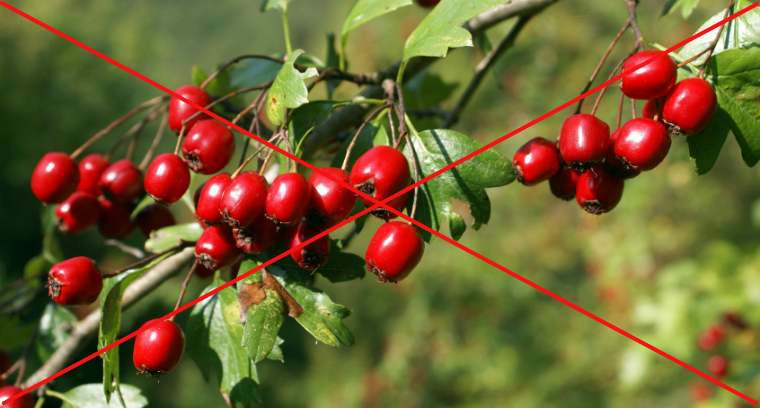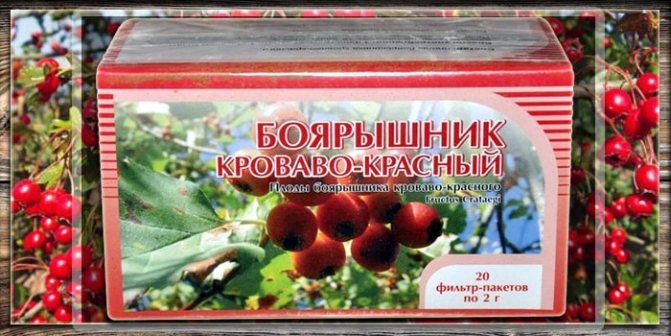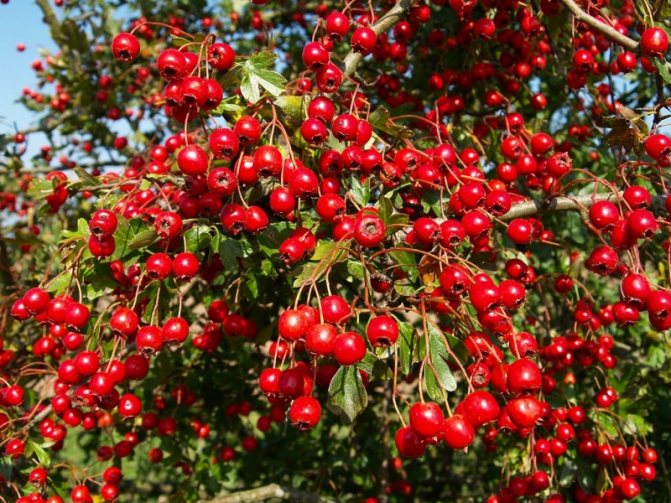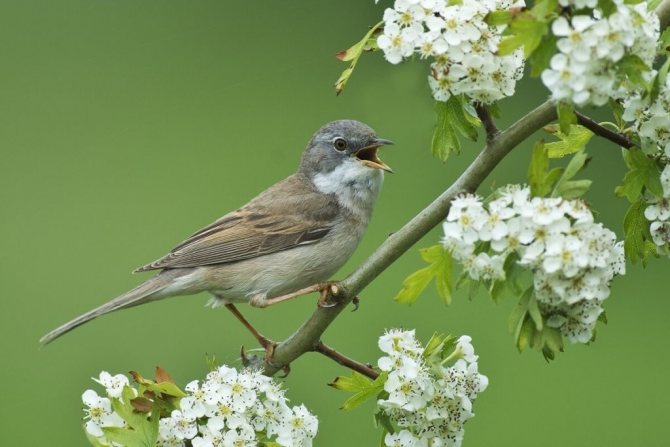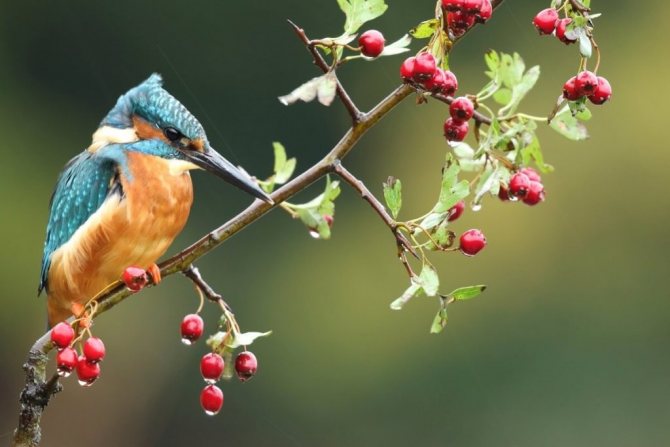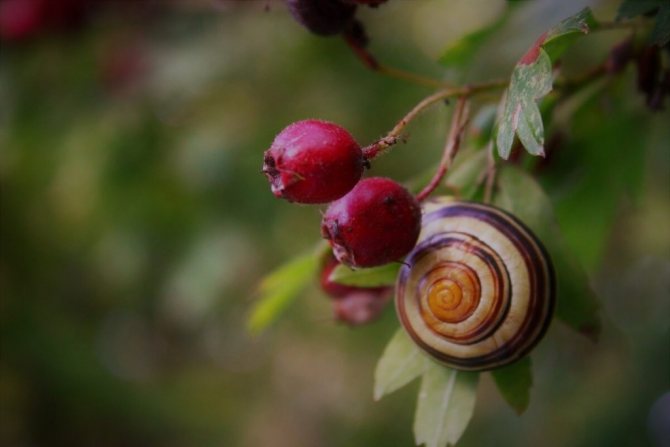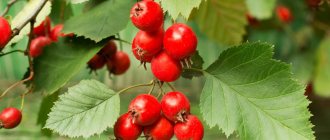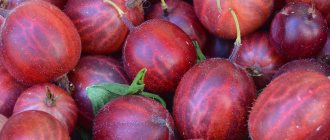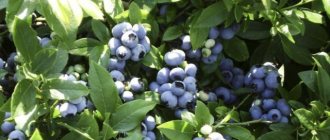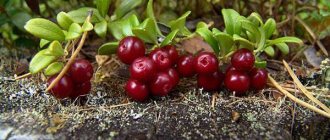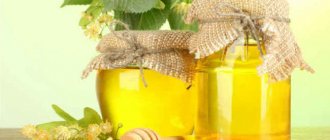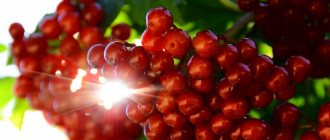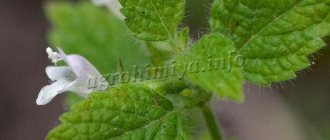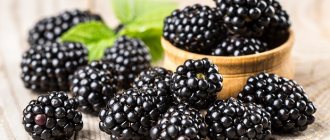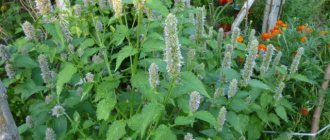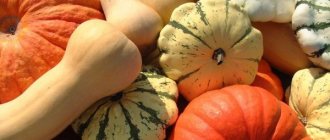Method 1 is ideal. There is a variety of hawthorn that is completely seedless, called "Soft hawthorn", for jam you can simply rub it through a sieve.
Method 2 - fast, but little pulp. Wash the berries, remove the tails, put them in a saucepan, pour a little water, at the rate of a quarter glass of water per 1 kg. berries. Put the pan on the stove, when the water boils, it is good to mix the berries several times to steame them evenly. Then let the hawthorn cool and rub the berry mass through a metal sieve, leaving the seeds in the sieve.
Method 3 - jewelry and very slow. Wash the hawthorn berries, dry, then cut each berry on both sides, separate it into two halves, carefully remove the stone with a knife. But this is a very long and laborious process that will take time and patience.
4 way - sparing. Buy a special press for removing seeds from cherries in a household goods store and with its help it is easy to remove seeds from hawthorn berries. September 30, 2020 Last updated September 30, 2020
Hawthorn jam (five minutes)
Hawthorn jam
Hawthorn is a very tasty and healthy berry, although, from the point of view of botany, it would be more correct to call it a small apple.
It tastes leathery, with juicy, sweet pulp (and, indeed, reminiscent of a piece of a pear apple or pear) and angular, hard bones that must be spat out, and when making jam, mashed potatoes, sauces and other homogeneous dishes from it, of course - delete beforehand.
Hawthorn jam resembles very tasty candied fruits. It has little syrup and a lot of dried hawthorn sugar halves. They seem to be hard, but they chew easily and with pleasure!
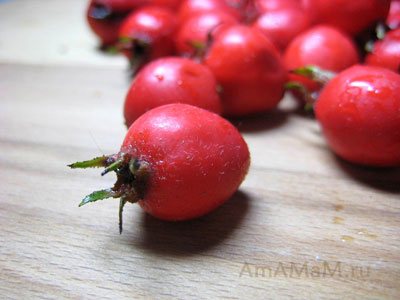
This is how hawthorn fruits look like
Proportions for hawthorn jam
i.e - 2:1
How to make hawthorn jam
cook in 3 steps, stirring and skimming:
- over very low heat, stirring often, wait for the hawthorn to let out the juice and bring to a boil. After boiling, cook for 5 minutes over medium heat, skimming off the foam. Cover and leave at room temperature;
- after 8-10 hours - bring to a boil again and act as in the first cooking;
- after the next 8-10 hours, repeat the procedure. Then put the hot jam in sterile jars and close the lids.
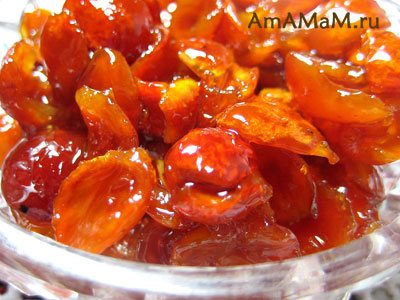

The jam according to your recipe turns out to be moderately sweet and very tasty!
Blood red hawthorn - the natural healer of our heart
In this article you will find everything about blood-red hawthorn, its chemical composition, pharmacological properties, benefits for the heart, recipes for use and possible contraindications.
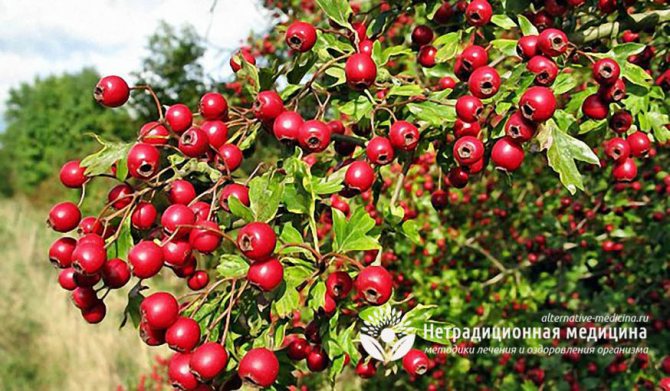

Hawthorn blood-red (Siberian).
Latin name: Crataegus sanguinea Pall.
Popular name: lady-tree, boyarka, year.
Family: Rosaceae.
Parts used: fruits, flowers.
Collection time: autumn.
Cooking features and taste
Hawthorn berries are dyed!
Keep in mind that when picking out seeds, hawthorn stains the fingers brown and is not washed immediately. Yes, yes, this is how you go to work and explain that your hands are clean, and this is all He ...)))
What lids to close the jars and where to store
Can be used common iron, iron screw caps... With these proportions of sugar and hawthorn, it is best to store it in a cool place. If the sugar is 1: 1 and you add a little lemon juice during cooking (or boil it with sour apples), then it will be preserved stronger and then you can store hawthorn jam at room temperature
And you can pack hawthorn jam in coffee glass jars with their own covers, or in ordinary cans for plastic lids... It is possible that they will stand at room temperature when the jam is acidified and the dose of sugar is increased, but I would not risk it and send them to the refrigerator or basement (cellar).
About the time intervals between making jam
Usually five minutes are cooked in this mode morning-evening-next morning or evening-next morning and his evening. It is not necessary to wait exactly 8-10 hours. It all depends on when and how much free time you have. You can put the whole process in 12 hours: start + 6 + 6.
Other options for harvesting hawthorn for the winter
And when the jam is boiled for the third time, take out the hawthorn with a spoon with holes and roll it in sugar, and then spread it on a sieve (it can be in several layers) and leave it for 5-6 days to dry in a ventilated place.
Then the candied hawthorn must be placed in glass or tin cans and tightly closed (so that the candied hawthorn does not dry out, otherwise you will not bite them!).
You can prepare cold hawthorn jam - pour peeled or whole scarlet berries with sugar (1: 1), put in sterile jars, filling them with jam 3/4 full. Top up the rest with regular sugar. Send to refrigerator or basement for about 10 weeks. During this time, the juice will be released and the canned hawthorn will float in the syrup. After - you can already eat. Rosehip, dogwood, viburnum and sea buckthorn are preserved in the same way (detailed recipe).
His can be dried, like rose hips - spread out on a newspaper in a dark or dark place, wait until it dries to a solid state and then, in winter, add dried hawthorn to compotes or when brewing tea. Or in medicinal decoctions and infusions.
Hawthorn can be canned with apples - recipe (better - sour, for example, Antonovka or sweet and sour) or even pears. Not only delicious jam will come out of this assortment of fruits, but also an excellent apple compote with hawthorn or apple-pear compote with hawthorn. By the way, instead of hawthorn in compote, you can add sea buckthorn, dogwood, rose hips and mountain ash to apples and pears - black and ordinary (just freeze it for a day or night so that there is no bitterness).
In addition, hawthorn berries (pitted, halved or mashed) are added to baked goods, and they are used as a sauce for sweet and meat dishes.
Description of the plant
Hawthorn blood red, which is also called Glod, Boyarka or Lady - this is a shrub or tree up to 6 meters high, in rare cases the plant height can reach 12 meters.
The barrel is dark brown, the bark on the branches is colored blood red. Long-term branches are characterized by the presence of burgundy thorns 2-3 centimeters long and 5 millimeters wide, there are no thorns on young shoots.
Leaves can be ovoid or diamond-shaped, pointed towards the end, the base is solid, wedge-shaped. Most often, there is a large serration at the edges, consisting of 3-5 blades.
Flowers gather in dense inflorescences... On average, the diameter of one flower is 12-15 millimeters, the color is golden-white. The flowering period is early summer and lasts 1-2 weeks.
The fruits ripen in mid-autumn and are small bright red or orange berries with a diameter of 8-10 millimeters.The pulp is mealy, has a large number of useful properties.
Hawthorn belongs to perennial plants, its lifespan can be up to 400 years. It begins to bear fruit after 12-15 years of life.
The region of natural growth of hawthorn is considered Central Russia, Siberia and the Caucasus... The plant can also be found in other Asian countries.
Hawthorn grows in forests, steppes or forest-steppepreferring dry meadows and forest edges. Such a plant perfectly tolerates severe frosts, but the close location of groundwater can cause rotting of the root system.
Description of the useful properties of hawthorn from the program "Life is healthy!":
The chemical composition of hawthorn seeds
The nutritional and medical value of the seeds of an unpretentious, strong shrub is due to the fact that they contain a considerable amount of active, easily assimilated substances:
- glycosides (including fructose), multivitamins, flavonoids,
- fatty, essential oils, saponins,
- microelements (potassium, iron, calcium), phytoncides, pectin.
A fresh berry contains one to three seeds (maximum five). Each has a triangular shape, does not sit very tightly in the juicy pulp and can be easily removed. However, without the need prescribed by the doctor, it is better not to clean the boyarka. Problems with their digestion in children and adults are rare, and the therapeutic effect is greatly enhanced, even if they are cooked, dried or frozen.
As a precaution, you can prepare compotes, teas, balms based on extracts from solid natural raw materials, the useful components of which turn into liquid during processing. Compared to those prepared from peeled fruits, such products are tastier, smell more pleasant (thanks to essential oils), and are distinguished by a richer color. It is easier to interest capricious patients with them, it is easier to persuade them to try a healthy drink.
Growing and harvesting
Hawthorn shrubs are not only useful, but also very beautiful, therefore they are often used as a decorative element in gardens and squares. For even more attractiveness, you can shape the plant into a bonsai shape. The shrub is unpretentious, and caring for it is quite simple, it is enough to adhere to some rules:
- Choose well-lit areas to keep your plant blooming regularly.
- Control soil moisture.
- Saplings should be planted in early spring or early autumn. In this case, it is important to dig deep enough holes (up to 90 cm), since the root system of the bush is powerful.
- When cutting off damaged shoots, the plant can take on quite interesting shape outlines, so do not be lazy and feel free to experiment.
- Cuttings of about 10 centimeters are suitable for the breeding process.
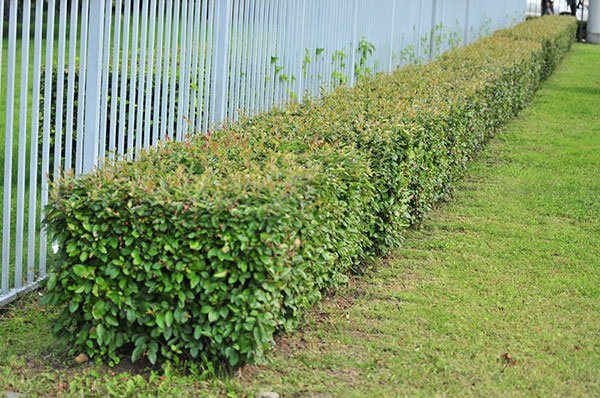

A hedge of hawthorn bushes will brighten any landscape
If you follow all the recommendations, you will be able to combine a pleasant and useful thing: to grow a wonderful decorative element and get medicines. The leaves, flowers and fruits of hawthorn are used for medicinal purposes. The collection of flowers is carried out in May, as the plant tends to quickly bloom. The fruits are harvested before the frost begins (September-October). Dried raw materials can be stored for 2 years. It is important to remember that flowers are dried at a temperature of 38 ° C, and for drying fruits it is better to use an oven with a temperature of 70 ° C.
The healing properties of plant seeds
Hawthorn seeds increase the overall effectiveness of hawthorn products:
- improve the functioning of the nervous system, heart, blood vessels, gallbladder, liver, kidneys (fight against atherosclerosis, tachycardia, edema, hypertension, urinary problems);
- strengthen immunity, the ability to regenerate tissues, normalize blood composition in diabetes, reduce the frequency and severity of epileptic seizures;
- help the body fight harmful bacteria, viruses, relieve headaches, nervous tension;
- promote the elimination of toxic substances, weight loss, regulation of carbohydrate metabolism.
Based on the purpose of use, if there are no contraindications, hawthorn can be combined with rose hips, chamomile, motherwort - make tinctures with alcohol, fresh water, vodka.


The seeds themselves are distinguished by excellent astringent action, therefore they are used as an adjuvant in the treatment of serious diseases of the digestive system, such as dysentery. Hawthorn seeds can be eaten ground: if a large amount of raw material is available, it can be easily dried on a baking sheet, chopped and added to flour for pies, muffins, rolls, cakes, white bread. Previously, this method of fortified fortification of baked goods was used in production.
You can peel ripe fruits yourself by wiping through a sieve with the smallest holes or opening one at a time with a small, perfectly sharpened knife at the cup. It is necessary to cut the thin skin and remove from the shells either the whole box at once, or the seeds separately. The pulp is almost not damaged. The method takes time but is not overly complicated.
Medicinal use
There are the following indications for the use of hawthorn:
- various forms of heart failure;
- myocardial infarction;
- tachycardia;
- arrhythmia;
- the initial stages of hypertension;
- disorders of the nervous system;
- insomnia.
In order to get rid of heart pain, it is enough to take one teaspoon of freshly squeezed juice from hawthorn berries.
Just like any other medicine, hawthorn has contraindications for use.
If you eat more than 200 berries at a time, then a decrease in blood pressure is possible, which is accompanied by dizziness, weakness, drowsiness, nausea and vomiting.
Take hawthorn 30 minutes before meals, otherwise, a sharp pain in the abdomen may appear.
Before using drugs from hawthorn in conjunction with other drugs that are similar in area of effect, you should consult your doctor.
In the initial stages of hypertension hawthorn is able to significantly improve the condition of the body. After a 20-day course, there is a relaxation of the walls of blood vessels, a decrease in blood pressure.
But it is also worth remembering that if the disease is in an advanced form, it is necessary to use stronger drugs.
With ischemic heart disease hawthorn is able to reduce the number of angina attacks, another positive effect will be to help with fat metabolism and reduce blood cholesterol levels.
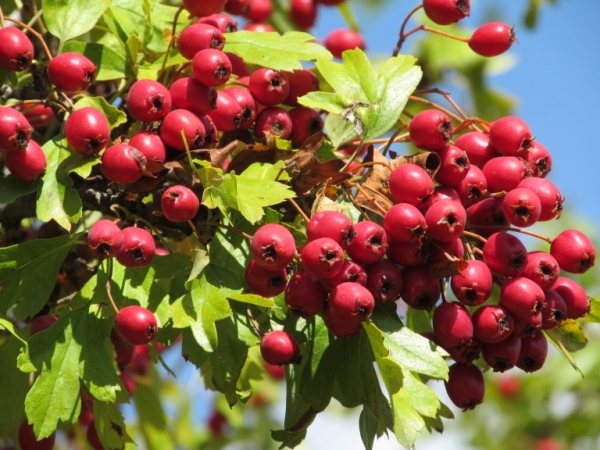

Take hawthorn 30 minutes before meals, for children under 12 years old and pregnant women, preparations with hawthorn are contraindicated
Related article: Panicled Zharnovets - useful properties, description
Nervous tension or stress can help relieve the use of hawthorn in conjunction with preparations containing valerian.
Many doctors advise using hawthorn tincture when detecting diseases such as atherosclerosis, heart attack, and heart failure. The therapeutic effect can be achieved only if the drug is used in the correct dosage.
3 times a day, 30 minutes before meals it is necessary to count 30 drops of the tincture and mix them with 30 milliliters of water.
The medicine is taken within 6 months, taking a ten-day break after every 30 days of admission.
Application of hawthorn seeds
Fresh, dried, mashed berries are usefully used for tea leaves, marshmallows, jelly, jam, the basis for compotes, alcoholic infusions. Treats fortifying, seasonal and vitaminizing action are added to the menu at will, if the likelihood of allergic reactions is excluded (otherwise harm can be caused). Reception of medication is carried out according to indications, consulting a doctor in advance.
Healing recipes
Hawthorn with a bone or a certain amount of harvested seeds are used to recuperate after diseases (acute respiratory infections, flu). You should take dry raw materials and shrub flowers (1: 1), measure out 2 teaspoons of the mixture, add 250 ml of boiling water, leave for 15 minutes, cool, drain. Drink a quarter glass three times a day, with honey. Simplified version: use whole berries, adding to regular teas (one per glass) and dried fruit compotes (10 pieces per 3 liters).
The weaker the thermal effect, the more useful components, especially vitamins, are stored in the raw material. Therefore, for children who have reached 12 years of age, the fruits are preventively brewed in a thermos, ten per 1 liter, and allowed to drink in a volume of up to 70 ml per day.
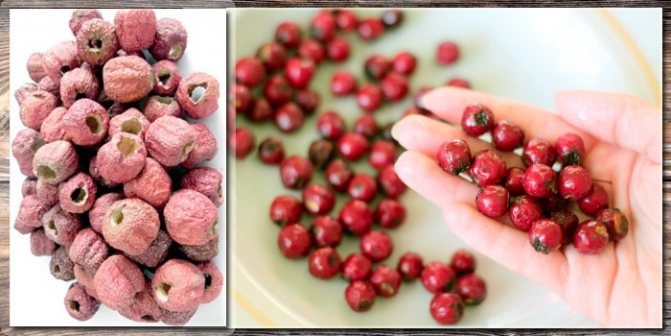

Use during menopause, neuroses
Unpleasant sensations - pulling heart pains, excessive sweating, overexcitation - can be removed by taking a little of the raw materials described above, chamomile flowers and marigolds (1: 1: 1), mixing and brewing with hot water. For 1 serving (glass), 100 drops are enough. Take 1 tbsp. a spoonful of chopped berries (fresh or dried), 1 glass of boiling water, insist warm under a lid. Drink warmed up twice a day - a third of a cup between meals - for 2-3 weeks with a break for 7 days.
Application and medicinal properties
It is used as a sedative, reducing the excitability of the nervous system and improving sleep. Reduces blood cholesterol levels, therefore it is prescribed for atherosclerosis. Hawthorn lowers blood pressure and improves coronary circulation, is used for hypertension, angina pectoris, myocarditis, cardiovascular insufficiency I-II degree, in menopause. Flowers and fruits of the plant reduce the permeability of blood vessels and capillaries. Flowers are stronger than fruits. Fresh fruits can be eaten. Hawthorn also has a mild diuretic effect.
Food recipes
Often these are jams, compotes. They can be recommended as auxiliary tonic, immunomodulatory healing agents.
Syrup
Differs in a specific, very pleasant taste. It is convenient to collect raw materials at the beginning of autumn, when the berries on the fruit bush are still small. They must be thoroughly rinsed in an amount of 1 kg, cleaned of debris, pour 1 liter of water, cook until softened. Grate through cheesecloth, mix with 1 kg of sugar, put on low heat again until the mass thickens, then add 5 g of citric acid. Leave for long-term storage in the form of twists, pouring hot liquid over sterilized cans with metal lids. They must be held with their necks downward until the contents have completely cooled down. The finished product can be drunk, put in pies as a filling, served as a dressing for pancakes, cottage cheese, pancakes.
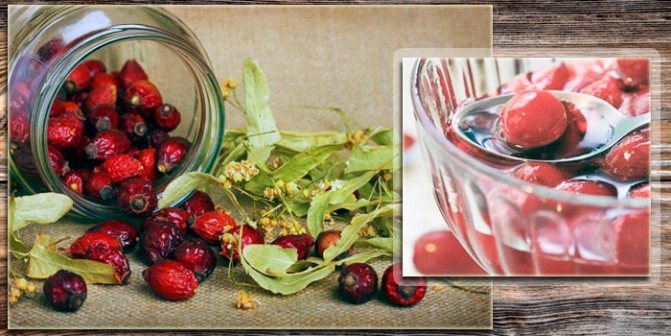

Jam
Wash the berries, weigh, removing the stalks. Take sugar in the same amount, pour thoroughly (add additionally to the laid out portions before rolling). Leave for 6-8 hours, stir. Distribute on sterile jars, twist them. Wait two to three months for the juice to come out. The second recipe: add 0.5 kg of sugar to 1 kg of pure whole boyars, let stand until morning, cook twice for 30 minutes on low heat with a break for several hours. Achieve a thick consistency (fruits can completely retain their shape). Place in glass containers as described above. You can eat for several years.
Compote
Take cans of any volume, cover with berries by a third, pour boiling water to the top. After 5 minutes, strain the liquid into a saucepan, add sugar there (for 1 liter - 2 tablespoons), put on fire. Bring the temperature of the resulting syrup to 100 degrees and immediately fill it up to the top with fruit containers. Roll them up, wrap them up, remove them before the cold weather.
Take 850 g of washed berries, 0.5 cups of water, boil, steam until softened, crush.Cool the mixture slightly, transfer warm to cheesecloth in a colander, at the same time collecting the juice (substituting a basin from below). Squeeze as much as possible, add sugar (1: 1), cook for 10 minutes, skimming off the foam. Pour into flat, shallow bowls, let cool without covering. Store the finished product in a cold place. Can be wrapped in parchment paper and brought to a marmalade consistency. The mashed pulp is used to prepare various preparations for the winter, marshmallows, jam, preserves. For example, it is easy to pour it in an enamel saucepan with the standard prepared syrup. Then cook as desired:
• over low heat, achieving as thick a consistency as possible, after the mixture has stood for 8 hours and vanillin and acid have been added to it;
• in 3 sets (time interval - a third of a day) 5 minutes after bringing to a boil, constantly skimming off the foam.
Pour into glass containers, seal, turn over. When cool, transfer to cold.
Traditional medicine recipes with Siberian hawthorn
The plant lady red is used in the form of alcoholic and water infusions, decoctions, tea. Glod is a part of herbal preparations indicated for the treatment of infectious and inflammatory diseases, but the field of cardiology and the postoperative period remains the widest application.
See More: Spring adonis (adonis): medicinal properties and contraindications
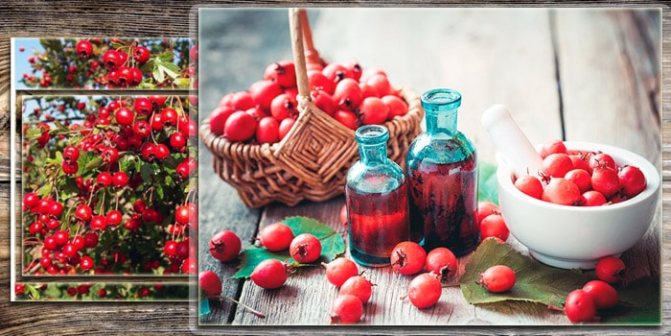

Contraindications
It is traditionally not recommended to eat ripe berries with a stone, from a bush: the concentration of biologically active substances in them is extremely high, you can get allergies. Cases of poisoning, getting the result opposite to the expected (healing) - also come true. Preschoolers, the elderly can choke on a tough fruit, a large seed.
Breastfeeding, pregnant women are prohibited from taking medications containing alcohol, and it is necessary to strictly monitor the action of the permitted means. Overdose can provoke an abortive effect or harm the newborn. Herbal infusions should not be given to children under 12 years of age without the consent of the pediatrician. Any means based on hawthorn are used only after receiving a doctor's recommendation: is it not harmful to use a certain recipe for the needs of a particular person.
Hawthorn blood-red - botanical description
The main morphological features of the plant:
- It is a shrub (small tree) that is 4-5 m high with many thorns.
- Has strong purple-brown shiny shoots.
- The shoots have thick straight thorns, reaching a length of 2.5-4 cm.
- Leaves grow in sequence, they are short-petiolate.
- On fruiting branches, the leaves are 2-6 cm long, on sterile ones - up to 9-10 cm.
- The leaves are 2-8 cm wide, serrate, and their blades (teeth) are sharp.
- The flowers are mainly white, with a specific odor, quite small, they are collected in inflorescences and are located at the tips of the branches.
- In one flower, there are most often five sepals, which are bent outward.
- Corolla has a diameter of 12-15 mm, stamens - about 20, they have purple anthers.
- The hawthorn fruit is similar to an apple, 6-8 mm in diameter, has a bone, the pulp of the fruit is mealy.
- Fruits are bright blood-red in color, spherical, sour-sweet taste.
- The hawthorn blooms in May - June, the fruits ripen in August.
The chemical composition of the plant - the main active ingredients
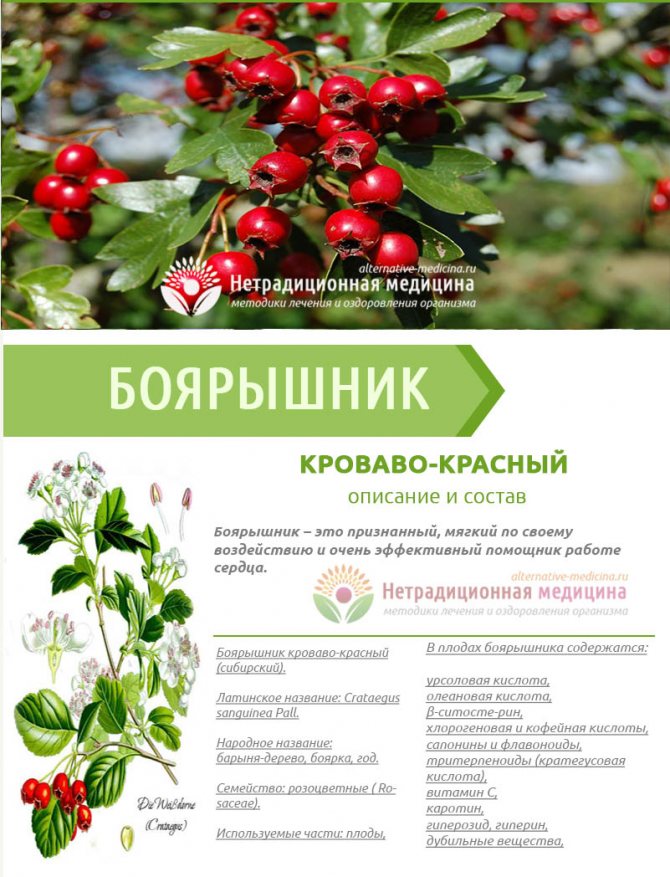

The beneficial properties of hawthorn are determined by many biologically active substances that are contained in this plant.
In-depth studies of the chemical composition of this plant indicate that various species of hawthorn are very close to each other in their chemical composition and in their physiological effects on the body.
Useful properties of the main substances contained in hawthorn
- Quercitin is responsible for the elasticity of capillaries, has antitumor and antioxidant effects, improves cerebral circulation, and prevents cardiovascular diseases. Reduces the risk of cataract formation. Increases the amount of oxygen in the bloodstream.
- Ursolic acid has a wound healing, anti-inflammatory effect.
- Oleanolic acid perfectly tones the heart muscle, increases the blood supply to the heart and brain.
- Chlorogenic acid prevents sclerosis, it is very beneficial for the health of the kidneys and liver.
- Caffeic acid has excellent antibacterial properties and helps to improve bile flow.
Hawthorn - pharmacological properties
Infusions and extracts, which are prepared from the fruits and flowers of hawthorn, tend to relieve spasms, dilate blood vessels, and improve the supply of oxygen to the blood.
Related article: Comfrey hard - useful properties, description
It has a moderate cardiotonic, antispasmodic and moderate sedative effect, normalizes blood clotting parameters.
There is a rather noticeable hypotensive effect from taking these drugs, so they are used with high blood pressure, as well as with arrhythmias.
An excellent anti-sclerotic effect is also noted.
Even with prolonged use of hawthorn preparations, no toxic effects on the body were noted.
How to cook at home
It is necessary to take 1 part of the hawthorn fruit and crush them with a crush. Place the raw materials in a glass container (preferably dark glass) and pour 4 parts of ethyl alcohol or vodka (at least 70% strength). The resulting solution must be infused in a dark place for 3 weeks. After that, the mixture should be filtered and stored in a dark place, tightly corked.
If, instead of fruits, the flowers of the plant are taken, then you will need 5 parts of alcohol or vodka. Pour the raw material and keep for 2 weeks in a dark place, then strain and store in a dark place.
It is not necessary to prepare hawthorn tincture yourself - it can be purchased at any pharmacy at an inexpensive price.
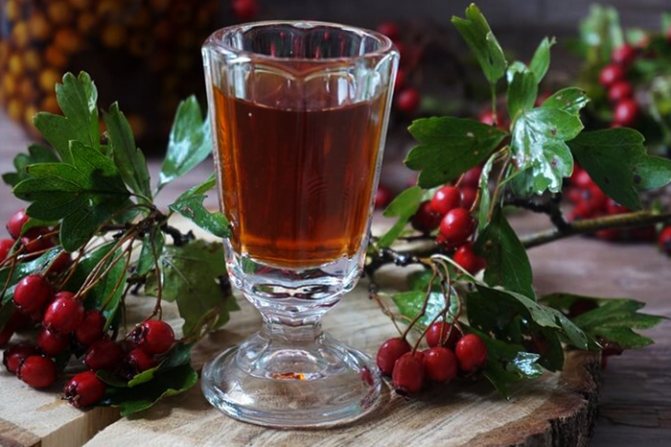

Why are hawthorn berries and seeds useful?
Can pitted hawthorn be eaten raw? You can, a small amount is not harmful. The medicinal value of fresh fruits is due to the high content of natural healing multivitamins, mineral bioactive elements, phytoncides, flavanoids, pectin, essential oils.
And the beneficial properties of hawthorn seeds are in a large amount of fatty oils readily soluble in alcoholic liquids, antibacterial, antiviral substances, glycosides, which contribute to tissue regeneration, restoration of immunity, and regulation of the work of nerve cells.
In addition, they have a remarkable astringent effect, therefore they are an excellent remedy for severe intestinal disorders, for example, with dysentery.
Therefore, for the manufacture of a truly medicinal tincture, medicinal tea, healthy compote or jam, it is preferable to use the fruits together with the seeds.
Application for other diseases
In 2013, the Samara Scientific Center of the Russian Academy of Sciences conducted an experiment: animals were given an alcoholic extract based on Siberian hawthorn obtained by evaporation. After analyzing the results of the study, it was found that when using the plant, it is possible to control the blood glucose level in diabetes mellitus. In addition to cardiology, scientists have identified the following areas of application in medicine:
- a decrease in the intensity of the manifestation of menstrual pain and PMS symptoms;
- treatment of herpes, hyperemia, dyspepsia;
- restoration of thyroid function;
- fighting obesity;
- relief of attacks of allergies, epilepsy, rheumatism;
- therapy and prevention of atherosclerosis, memory training;
- treatment of liver pathologies and gallstone disease;
- diarrhea;
- improvement of well-being in case of psycho-emotional stress.
In 2010, a second study was conducted in which 32 people took part in 900 mg of a drug based on boyarka per day. After two months, the results of the experiment were thoroughly analyzed, the scientists came to the conclusion that the plant improves physical endurance under high stress. Against the background of dyspnea reduction, fatigue decreased by 50%. This effect is achieved due to the compound antioxidant - phytosterol, which is considered a natural steroid and allows you to build muscle mass in a natural and harmless way.
Medicinal recipes from fruits with seeds
Recipe 1
To get rid of unpleasant symptoms with menopause, chamomile flowers, marigolds, dry hawthorn berries (or seeds) are mixed in equal proportions. Then 1 tsp. brew with boiling water. This tea relieves sweating, nervous excitement, pulling pain in the heart.
Recipe 2
You can restore strength after flu, colds with the help of a medicinal collection of dried berries (seeds) of hawthorn and its flowers in equal quantities. 2 tsp the mixture is insisted on 250 ml of boiling water for 15 minutes. Cool, strain, drink 1/4 cup three times a day.
Only a unique combination of natural biological elements of seeds and pulp of hawthorn, their minerals, multivitamins, oils, glycosides, phytoncides of seeds and pulp contributes to the speedy elimination of poisons from the body, strengthening the heart muscle, getting rid of arrhythmias, which, in fact, are famous for hawthorn fruits. The bones will not harm, but they will bring great benefits: concentrated solutions have a higher value.
Useful properties of hawthorn
How is hawthorn useful? The plant is characterized by sedative, tonic, tonic, soothing properties. It has anti-sclerotic, cardiotonic, anti-stress effects. It is an effective antispasmodic. Fruits and inflorescences are widely used for medicinal and prophylactic purposes.
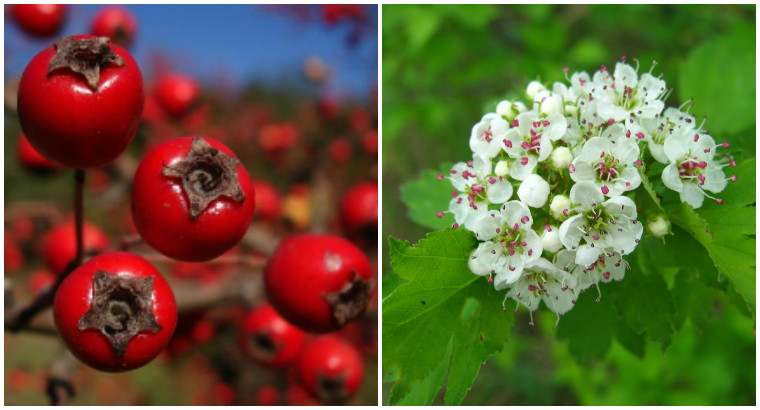

Shrub berries are characterized by the ability to remove accumulated toxins and ecotoxins from the human body, to prevent the formation and further development of tumor-like neoplasms. The benefits of hawthorn for various systems:
- For the circulatory system, heart. Funds based on it are recommended for normalizing pressure and cholesterol indicators, activating the blood flow process, strengthening the walls of large vessels, capillaries and reducing the likelihood of their spasm. They improve the effectiveness of the treatment of angina pectoris, extrasystole, paroxysmal tachycardia, ischemic disease, cardioneuroses, atherosclerosis, hypertension, strengthening the heart muscle. They are prescribed in the rehabilitation period after heart attacks, are taken in the presence of vegetative-vascular dystonia, pain and spasms in the chest area, at the initial stages of the development of heart failure.
- For the digestive system. The plant is taken for flatulence, chronic constipation, various forms of gastritis. It helps to normalize digestion processes, eliminate spasms, improve intestinal peristalsis, and increase the absorption of nutrients entering the body. Prevents the occurrence of peptic ulcer disease, colon cancer. It is used in the complex treatment of intestinal infections.
- For the nervous system. It is used in the case of insomnia, neuroses, frequent fatigue, epilepsy, depressive and stressful conditions, regular headaches and dizziness, and chronic fatigue.
- For the immune system. Regular consumption of berries increases immunity, which is most important during periods of seasonal epidemics. This measure also allows you to accelerate the recovery of the body after diseases of infectious etiology.
- For the skin. It is prescribed for external application in the presence of ulcerative lesions, burns, wound surfaces. Recommended to eliminate itching, effective in acne, psoriasis, eczema.
Hawthorn is actively used in the production of cosmetics, which is associated with its tonic, decongestant, moisturizing properties. The use of such drugs makes it possible to minimize the intensity of manifestations of age-related changes.
Benefits and composition
Oddly enough, the exact composition of the hawthorn is still a mystery to scientists. It is revealed that it contains:
- Various flavonoids that strengthen the walls of blood vessels, normalize the work of the heart. Also, substances of this group improve cerebral circulation, inhibit the release of histamines.
- Antioxidants that have a cleansing, anticancer effect on the body.
- Tannins with anti-inflammatory and bacterial properties.
- A decoction of hawthorn fruits is also useful due to the content of a large amount of acids in it.
- So, for example, caffeic acid enhances the production and excretion of bile, and ursolic acid fights inflammatory processes in the body.
- The content of a large amount of different vitamins, micro- and macroelements in hawthorn fruits has a beneficial effect on the human immune system: hemoglobin increases, iron deficiency is replenished, and resistance to colds increases.
Harvesting of fruits and flowers of hawthorn
Proper harvesting of plant materials makes it possible to preserve the beneficial properties of the plant at the maximum level. The benefits of dried hawthorn are equal to those of freshly harvested parts of this perennial.
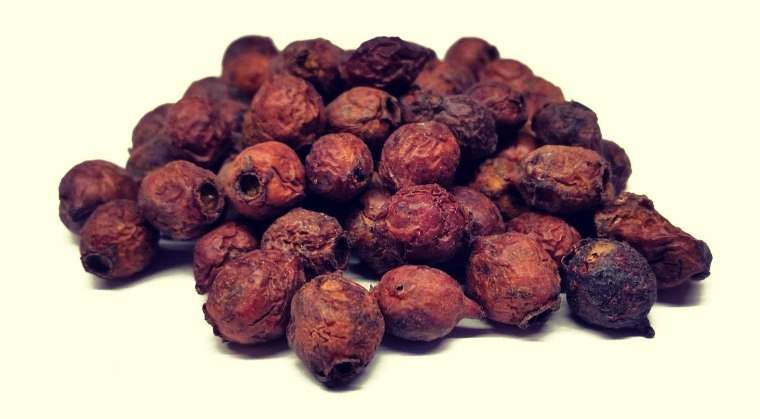

The collection of flowers should be carried out in dry weather in the morning. This is not always feasible, since the duration of the flowering period of the shrub is 2 - 3 days. Procurement is carried out in the following way:
- The flowers are separated from the plant by capturing a small area of the stem.
- The resulting crop is scattered in a thin layer on a baking sheet and placed away from sunlight (under a ventilated canopy, on an unglazed veranda), kept until completely dry.
- The resulting medicinal raw materials are laid out in paper bags, fabric bags or boxes lined with paper at the bottom.
The allowed storage period for dried flowers is 1 year. Fruits are harvested in early to mid-autumn also in dry weather conditions. Bush berry harvesting method:
- The collected fruits are sorted out, rotten, spoiled berries, and impurities are removed.
- Then they are washed under running water, dried and laid out on a baking sheet, which is placed in the oven at a temperature of +50 degrees. The drying time depends on the size of the fruit and is carried out in several approaches.
Further storage is carried out in cloth bags, wooden boxes. The shelf life of the product is up to 2 years. Freshly picked berries can also be stored in a freezer at a temperature of -12 ... -18 degrees for 8 months.
How to dry a hawthorn. We harvest hawthorn according to the rules: drying, storage
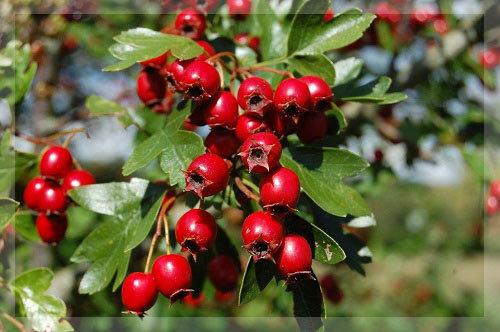

Hawthorn is famous for its benefits and value for the body. Great for the prevention and treatment of seasonal colds. In addition, it increases the level of hemoglobin in the body and thus helps with anemia. Also helps with angina pectoris, diabetes and indigestion. Even pregnant women will benefit from the use of hawthorn.
Surely you want to keep such a healthy product for the winter. To do this, use a simple method - drying.
How to dry and store hawthorns will be discussed in this article.
Collection and preparation of berries
To properly dry a hawthorn, you first need to harvest it correctly. To do this, you need to know several important points:
1. Harvest hawthorns should be in clear, sunny weather, not after rain. There should also be no dew.This is to ensure that the berries do not become moldy during the drying process, if you produce it naturally.
2. Collect berries from the branches not by the piece, but with brushes. For convenience, you can use a pruner or garden shears.
3. After harvesting, the hawthorn is washed at will, but you can only peel off the leaves and remove the spoiled berries.
4. You can also dry with brushes or, if desired, separate the berries and sprinkle them on the pallet in an even layer.
5. When preparing the berries for drying, the "tails" and "noses" are separated from them. This is best done with a knife. As a result, a round berry should remain. You do not need to take out the seeds, this is done only in the case of the subsequent preparation of the compote.
The berries ripen in early autumn and are harvested from late August until the first frost. Ripe fruits stand out from the rest with their bright red or orange color. They need to be collected and dried.
How to dry hawthorn in the oven
To dry the berries in the oven, we will wash them. Pour the fruits into a colander and rinse under running water. We spread it on paper towels and wait until the moisture is absorbed and the hawthorn dries.
We turn on the oven to heat it up, and while it is heating, sprinkle the berries in a thin enough layer on a baking sheet so that they lie not on top of each other, but in a row. We put the baking sheet in the oven and dry the berries at a temperature not exceeding 60 degrees with the door open. Do not leave the process unattended, stir the berries periodically for more even drying.
You can get the same effect by using an electric fruit dryer or dehydrator, which is more gentle drying than an oven.
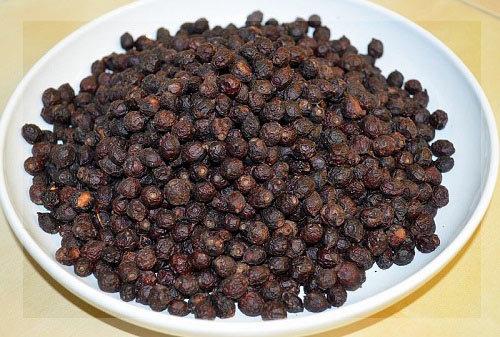

Drying naturally
It is more durable than when using the oven, but more gentle for the preservation of vitamins and all nutrients.
In this case, it is better not to wash the berries, but to scatter them in a very thin layer on a flat surface. It is important to install them in a dry, ventilated area so that direct sunlight does not fall on the berries. Stir the fruits a couple of times a day, pick out those that have started to grow moldy so that they do not infect others. Gradually, the berries will wither, which will be the most favorable of all methods of drying them.
How do you know if a hawthorn is dry? Squeeze a handful of berries in your fist, and unclench. If they stick together into a lump, then there is still moisture and you need to continue drying them. If the berries are scattered in the palm of your hand, then you can collect them in bags - the dried hawthorn is ready.
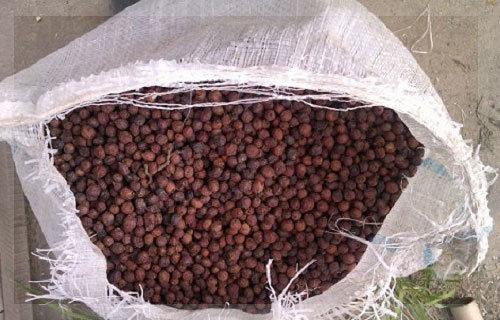

Hawthorn storage
It is better to store dried fruits in canvas or paper bags, or in glass jars. Do not put the berries in plastic bags - the moth will easily gnaw them and climb inside.
The shelf life of berries can be up to 8 years, but most of the beneficial properties are lost after 2 years. Therefore, it is advisable to use the fruits for this period. Brew teas, prepare infusions, decoctions and tinctures. The use of hawthorn is great, moreover, in any form. The easiest way is to brew the berries in a thermos and add them to your tea.
We will also talk about the beneficial properties and uses of hawthorn berries and flowers, subscribe to the channel, and you will always be aware of new publications.
Health to you and your loved ones!
Pregnant and lactating
It is not recommended to drink tea with hawthorn during pregnancy. The limitation is associated with the risk of developing arrhythmias in the fetus, the risk of increased toxicosis and the appearance of allergies in a woman. An exception can be made by a doctor if a pregnant woman has serious heart problems.
The natural remedy is used as an alternative to synthetic drugs that cause fetal malformation. However, the decision on therapy is made by the doctor individually based on the benefits and possible harm.
When breastfeeding, treatment with hawthorn is not carried out. The active substances of the plant penetrate into milk.Many of them are useful, but there are some that are considered harmful to the baby. For example, hyperoside increases the rate of myocardial contraction, which can cause severe arrhythmias in a child.

